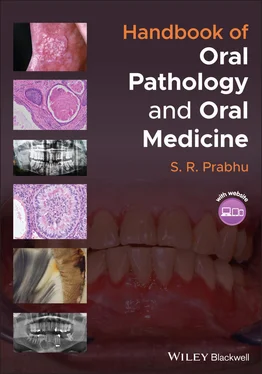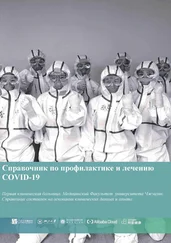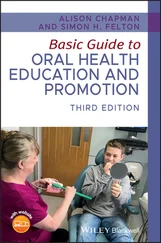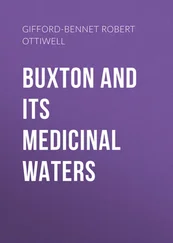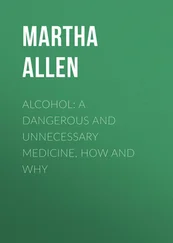Atypia: deviation from normal or a state of being not typical. Atypical cells are not necessarily cancerous.
Colloid bodies (also called Civatte bodies): these apoptotic keratinocytes are oval or round, immediately above or below the epidermal or epithelial basement membrane.
Hydropic (liquefaction) degeneration: basal cells become vacuolated, separated, and disorganized.
Hyaline bodies: necrotic keratocytes; also termed colloid bodies, Civatte bodies, and apoptotic bodies.
Standard Abbreviations for Prescribers
ac(before meals) ad lib(as desired) ASAP(as soon as possible) bid(twice a day) btl(bottle) c(with) cap(capsule) crm(cream) disp(dispense on a prescription label) elix(elixir) g(gram) gtt(drop) h(hour) hs(at bedtime) iu(international units) IV(intravenous) l(litre) liq(liquid) loz(lozenge) mg(milligram) min(minute) ml(millilitre) NaF(sodium fluoride) prn(as needed) q(every) q2h(every 2 hours) q4h(every 4 hours) q6h(every 6 hours) q8h(every 8 hours) q12h(every 12 hours) qam(every morning) qd(every day) qhs(every bedtime) qid(four times a day) qod(every other day) qpm(every evening) qsad(add a sufficient quantity to equal) qwk(every week) Rx(prescription) s(without) sig(patient dosing instructions on prescription label) sol(solution) stat(Immediately) syr(syrup) tab(tablet) tbsp(ttablespoon) tid(three times a day) top(topical) tsp(teaspoon) oint(ointment) OTC(over the counter) oz(ounce) p(after) pc(after meals) PO(by mouth) U(unit) ut dict(as directed) visc(viscous) wk(week) yr(year)
Part I Pathology of Teeth and Supporting Structures
1 Disorders of Tooth Development and Eruption
CHAPTER MENU
1 1.1 Anodontia, Hypodontia and Oligodontia
2 1.2 Hyperdontia (Supernumerary Teeth)
3 1.3 Microdontia and Macrodontia
4 1.4 Gemination, Fusion and Concrescence
5 1.5 Taurodontism and Dilaceration
6 1.6 Amelogenesis Imperfecta
7 1.7 Dentinogenesis Imperfecta
8 1.8 Dentinal Dysplasia (Dentin Dysplasia)
9 1.9 Regional Odontodysplasia (Ghost Teeth)
10 1.10 Delayed Tooth Eruption
11 1.11 Tooth Impaction (Impacted Teeth)
12 1.12 Dens Invaginatus and Dens Evaginatus
13 1.13 Fluorosis (Mottled Enamel)
14 1.14 Tetracycline‐Induced Discolouration of Teeth: Key Features
15 1.15 Enamel Pearl: Key Features
16 1.16 Talon Cusp: Key Features
17 1.17 Hutchinson's Incisors and Mulberry Molars: Key Features
18 1.18 Tooth Ankylosis: Key Features
19 1.19 Supernumerary Roots: Key Features
1.1 Anodontia, Hypodontia and Oligodontia
1.1.1 Definition/Description
Anodontia: All teeth are developmentally (congenitally) missing
Hypodontia: one to six developmentally (congenitally) missing teeth except the third molars
Oligodontia: more than six developmentally (congenitally) missing teeth
Anodontia: extremely rare
Hypodontia: incidence: 4.4–13.4%. The most common developmental anomaly
Oligodontia: incidence: 0.25%
Hypodontia of the deciduous teeth affects less than 1% of children Figure 1.1 Hypodontia: clinical photograph of missing maxillary lateral incisors(source: Bin im Garten, https://commons.wikimedia.org/wiki/File:Hypodontie_der_zweiten_oberen_Schneidz%C3%A4hne_IMG_1726.JPG. Licensed under CC BY‐SA 3.0).
1.1.3 Aetiology/Risk Factors
Anodontia: mutations in EDA, EDAR and EDARADD genes
Hypodontia: mutations in MSX1, PAX9, IRF6, GREM2, AXIN2, LRP6, SMOC2, LTBP3, PITX2 and WNT10B. WNT10A genes
Oligodontia: mutations in MSX1, PAX9, IRF6, GREM2, AXIN2, LRP6, SMOC2, LTBP3, PITX2 and WNT10B. WNT10A genes
Environmental factors: hypodontia can result from trauma to the developing dental tissues such as chemotherapy or radiotherapy
The most common missing multiple teeth (other than third molars) are:Maxillary lateral incisors ( Figure 1.1). This is followed by the mandibular second premolars and maxillary second premolarsSkin/nails/hair/sweat glands may be affected in some cases of hypodontiaMorphology of teeth may be defective (microdontia/peg‐shaped laterals) in hypodontiaIn Down syndrome oligodontia is commonHypodontia/oligodontia might also be associated with cleft lip and palateOver retention of the overlying deciduous tooth (because of the missing permanent tooth germ) occurs frequently
1.1.5 Radiographical Features
In many cases routine radiography may reveal developmentally missing teeth
History
Clinical examination
Radiography
Prosthodontic treatment/implants or orthodontic treatment for edentulous spaces
1.2 Hyperdontia (Supernumerary Teeth)
1.2.1 Definition/Description
Hyperdontia/supernumerary teeth: excess number of teeth beyond the expected 20 deciduous and 32 permanent teeth
The shape of the supernumerary tooth may resemble a tooth of the normal series. In this case, the extra tooth is called supplemental tooth
98% of supernumerary teeth occur in the maxilla
In 1% of the population, a supernumerary tooth occurs in the midline in anterior maxilla; this is called mesiodens
1.2.3 Aetiology/Risk Factors
Budding of the dental lamina: stimulus for budding is not known
Asymptomatic: supernumerary teeth may be detected incidentally on radiography for other reasons
Supernumerary teeth are five times more common in the permanent dentition than in the deciduous dentition
Supernumerary teeth may be single or multiple, unilateral or bilateral, and may be present in one or both jaws.
The most common single supernumerary tooth: midline of the anterior maxilla, known as a mesiodens. This is also an example of microdontia
Other supernumerary teeth: maxillary fourth molars, maxillary lateral incisors, mandibular fourth molars and mandibular premolars
The most common site for multiple supernumerary teeth is the mandibular premolar region ( Figure 1.2) Figure 1.2 Supernumerary premolars located lingual to the mandibular first and second premolars.
A supernumerary tooth lingual or buccal to a molar is called a paramolar
A supernumerary tooth located distal to a third molar is called a distomolar
Supernumerary teeth are common in patients with cleidocranial dysplasia and Gardner syndrome
Complications of supernumerary teeth may include:Delayed or ectopic eruption of adjacent teethRoot resorption of adjacent teethCrowdingMalocclusionDiastemaPericoronal cyst or infection
Читать дальше
